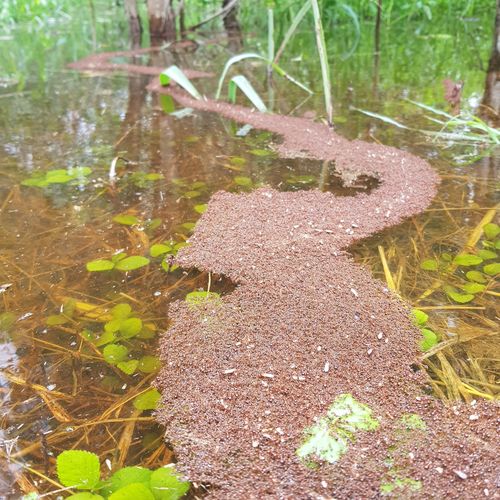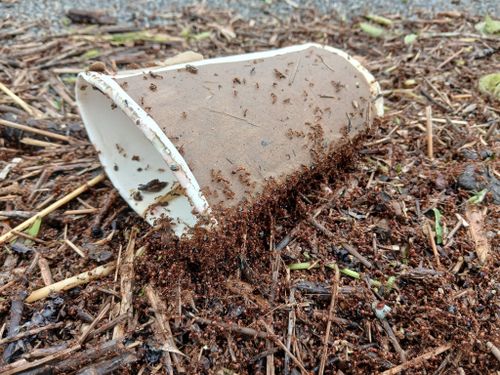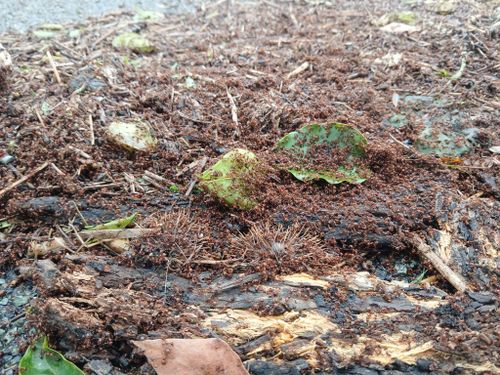A video of fire ants forming ‘life rafts’ on Queensland floodwaters has gone viral on social media, prompting concerns that the invasive species will enter NSW in the aftermath of ex-Cyclone Alfred.
Footage shared by Allenview resident Kirsty McKenna to Facebook on Wednesday shows swathes of fire ants forming clumps on a body of water near her property to stay alive.

“There’s piles of them everywhere, floating through the waterway, heading to the Logan River,” said McKenna in the video.
“You can see the ants moving the eggs around in the pile, trying to get them in the middle to protect them, clinging on to anything just to stay afloat, until the water recedes and they can make a new nest.”
Fire ants are an invasive species endemic to Queensland that can kill people, wildlife, and live stock, and destroy crops and machinery, with invasive species advocates urging state and federal governments to amp up suppression efforts.
/https%3A%2F%2Fprod.static9.net.au%2Ffs%2F861cdff2-45c9-418b-be14-8c619055dc88)
“As flood waters recede we are urging the community to look out for and report fire ant nests including in their backyards, local parks, beaches or bushland,” Invasive Species Australia Advocacy Manager Reece Pianta says.
Recent heavy rainfall in south Queensland will spread high-density fire ant infestations and may sweep the ants into carrier materials like turf, he says, threatening other parts of Australia.
“Fire ants form large floating rafts that move with water currents. Disturbingly, new footage shows this rafting behaviour happening right now in flood-affected areas with high fire ant density like Logan, Scenic Rim and northern Gold Coast.”

The NSW government has today announced that it will ban fire ant-carrying materials, such as hay, from infested and storm-impacted south-east Queensland areas from entering the state, in an effort to prevent an infestation.
“The impacts of Tropical Cyclone Alfred are being felt in our agricultural sector in the north of the state,” Minister for Agriculture Tara Moriarty said.
“They need our support to get them back on their feet and don’t want a fire ant incursion adding stress and strain to their recovery.”

However, ants simply floating into NSW is “not possible” based on hydrological analysis, NSW Chief Invasive Species Officer Scott Charlton said. Instead, human activities are most likely to cause an infestation.
“They will either be carried with materials such as soil, mulch, hay and turf, or fly in by natural spread from QLD,” Moriarity said.
According to Pianta, fire ants are expected to exceed $2 billion per year in economic impacts on Australia’s economy, and may cause over 650,000 extra medical appointments each year if they get out of control.
“Fire ants are one of the world’s worst super pests and their unchecked spread will result in economic damage greater than that caused by cane toads, rabbits, feral cats and foxes combined,” he says.
Pianta advises people to not put themselves, clothing, or belongings in direct contact with ants or their nests if they encounter them.







